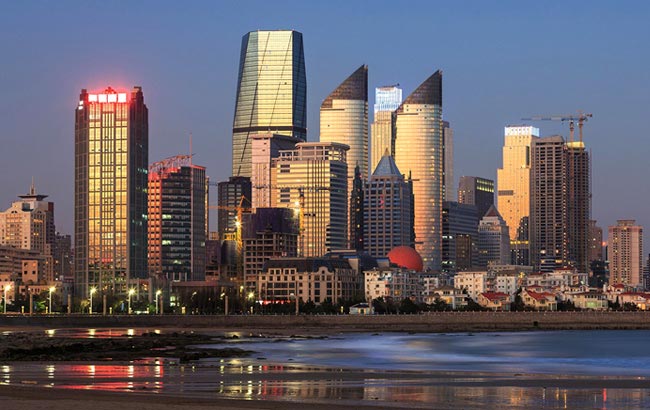Main Content
FAQ
SEMIZENTRAL at the World Horticultural Exposition 2014
What is SEMIZENTRAL?
SEMIZENTRAL is an infrastructure approach for future cities. It is an alternative for extensive, centralized systems with long lead times and insufficient scalability.The innovative approach towards semicentralized supply and treatment systems has been developed to serve new-build residential areas in fast-growing metropolitan environments. Each urban district is provided with a flexible integrative infrastructure system for water, wastewater, and waste, adaptable to the respective need.
Where does the SEMIZENTRAL approach come from?
In the 21st century, there is a pressing need for action regarding infrastructure planning and development in fast-growing metropolitan areas. Worldwide, urbangrowth involves an increasing consumption of basic resources, resulting inserious consequences for infrastructure, water supply as well as the treatment and disposal of wastewater and solid wastes. Due to insufficient or non-existent treatment facilities for wastewater and waste, it is not only the quality of life that is impared, but the environment, as well, is at serious risk. In order to meet these extensive challenges, concepts that facilitate increasing resource efficiency are needed. The SEMIZENTRAL approach is such a modern, efficient and trend-setting infrastructure concept.
What is the advantage in comparison to conventional systems?
SEMIZENTRAL shows an outstanding flexibility. A semicentralized resource and recovery center (RRC) integrates different technologies and makes a 30-40% reduction in the drinking water demand possible, via intra-urban water management and, in parallel, reduced wastewater loads. In addition, biogas generation for energy production enables an overall energy-autarkic plant operation.
How is this done?
The SEMIZENTRAL approach combines the traditionally separated sectors of water, wastewater, waste, and energy. Before being treated in the resource and recovery center, wastewater streams (so-called grey water and black water) are collected separately. Sewage sludge is co-treated with organic waste to produce biogas which in turn is used for energy generation.
Why Qingdao?
In organizing the WHE, the megacity in the eastern province of Shandong underlines its claims to realize “green” growth. Qingdao with its 8 million inhabitants faces significant water scarcity. To date, only one seventh of the water amount that is regarded as Chinese average is available to the city’s inhabitants. This is the reason the city council as well as private developers invest heavily in trend-setting infrastructure systems.
What does WHE 2014 stand for and what is SEMIZENTRAL doing there?
The World Horticultural Exposition 2014 (WHE) takes place in Qingdao from April to October 2014.
The WHE is organized by the Qingdao Municipal Government and the Executive Committee of 2014 Qingdao International Horticultural Exposition.The Chinese minister Mr. Wan Gang (MoST), with the participation of all research partners and sponsors, will inaugurate the WHE, regarded as the “Olympics of Horticulture”, and the SEMIZENTRAL supply and treatment center on April 25,2014. The organizers expect about 12 million visitors at the WHE, which presents the current worldwide trends and technologies in the horticulture sector.
In the course of the WHE, two residential areas and a WHE village as well as two hotel complexes for a total of about 12,000 inhabitants are established. In this context, within 6 months, the semicentralized RRC Qingdao was constructed as the worldwide first reference plant. The RRC will collect and treat the settlement area’s wastewater according to the SEMIZENTRAL approach. The purposes of the plant are wastewater treatment, production of service water, and the generationof biogas for energy.
Who is responsible for the artistic design of the RRC façade?
The German artist Susanna Neunast has developed an expansive art installation that decorates the outer façade of the entrance building as well as parts of the interior. She uncovers the extraordinary in the seemingly ordinary medium water.That’s how Susanne Neunast captures the fascination and beauty of water to make it emotionally accessible, and she communicates unexpected perspectives of perception. Beside the artistic installation, the RRC lobby welcomes its visitors with especially developed, well-founded professional visual information installations on the plant and the semicentralized approach.
Who are the cooperation partners?
During the approximately three years of planning and operational attendance of the semicentralized RRC Qingdao, 14 partners from Germany, the Tongji University Shanghai and the Qingdao Technological University worked together in a cooperative consortium. The TU Darmstadt maintains a partnership of more than 30 years with its Chinese partners.
Who finances the semicentralized RRC Qingdao?
Investment as well as operating costs are paid for by the WHE development company.The German Federal Ministry of Education and Research (BMFT) financed the joint research group’s scientific support during implementation. MoSt supports the Chinese universities in research. The Chair of Wastewater Technology, Institut IWAR, of the TU Darmstadt heads the joint research project.
The following supporters and sponsors have made important material contributions towards the realization of the SEMIZENTRAL approach. Our sincere thanks go to:
Wilo SE (pumps and mixing devices)
Aerzner Maschinenfabrik GmbH (blowers)
Auma Riester GmbH & Co.KG (gearboxes for valves)
OTT System GmbH & Co.KG (aeration elements)
Binder GmbH (valves and electronic control devices for aeration)
LAR Process Analyzers AG (measuring technique).
From the development departments of these institutions and companies originate a multitude of innovative components and machinery. They are now part of the STC facilities with its state-of-the-art technology. The sponsors’ great commitment and extensive know-how have played a decisive role in the high-quality layout and thus the realization of the worldwide first semicentralized supply and treatment center in Qingdao.





